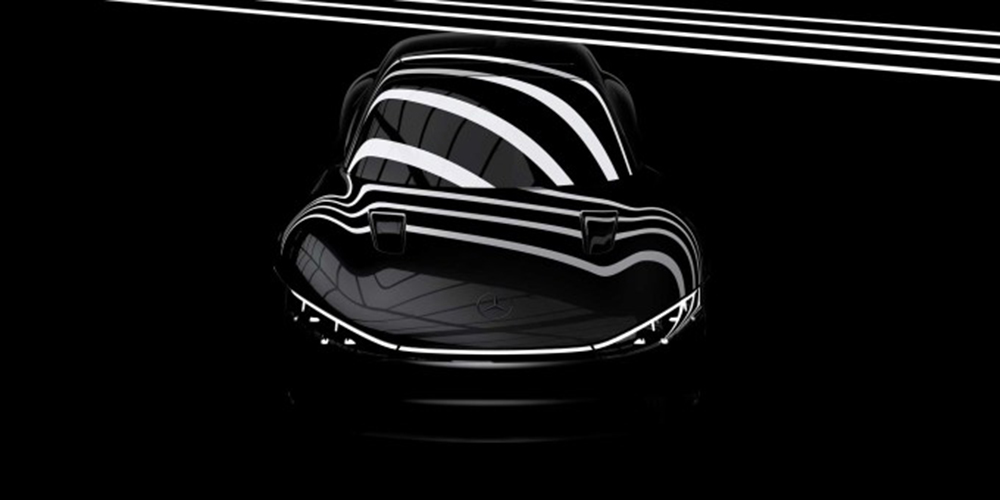面对来自特斯拉和监管机构的双重压力,梅赛德斯-奔驰(Mercedes-Benz)将颇具野心的目标提升了一倍——预计到2025年,其销售的汽车中约有50%将部分或完全由电池供电。
戴姆勒公司(Daimler)的这个核心汽车部门在前十年间总共为其纯电动汽车(BEVs)计划拨款逾400亿欧元。7月22日,梅赛德斯又公布了到2030年完全转向生产清洁、零排放汽车的计划(如果条件允许)。
一周之前,欧盟委员会(European Commission)宣布了到2035年禁止传统内燃机汽车(ICE)的计划,成为应对气候变化政策蓝图的一部分。
戴姆勒的首席执行官康林松(Ola Källenius)在一次演讲中称:“转折点正在临近,尤其是在奔驰所属的豪华车领域。这也是我们加大赌注的原因,让奔驰尽快从‘电动汽车优先’加速到‘纯电动汽车’。”
到2025年,该公司将为其系列中的每一款车型都提供可替代的纯电动汽车——尽管纯电动汽车的制造成本将大幅提高,预计到2030年才会与内燃机汽车趋同。
为了维持转型期间的盈利能力,该公司计划“彻底削减”与纯电动汽车无关的所有产品投资,比如,公司将不再为内燃机汽车车型开发新的车辆平台。这意味着,将电池与汽油/柴油发动机结合在一起的新型插电式混合动力车,也将在未来10年内告别市场。

在这个计划当中,还包括公司将与合作伙伴一起在全球建立8家工厂,其中包括一家在美国的工厂,每年生产价值200千兆瓦时的电池,可供大约200万辆纯电动汽车使用。
但是,对管理层来说,中期目标似乎比预想的更接近、更直接,因为从头开始开发一种全新的模式通常需要三年甚至更长时间。漫长的准备时间意味着,战略上的根本性转变首先需要在系统中发挥作用,然后才会产生影响。
来自一级方程式赛车的帮助
在这个进程当中,梅赛德斯还计划在法律允许的地方逐步取消通过特许经销商的分销,其将在各个市场逐步转向直销模式。因此,创业风险将从汽车零售商转移到汽车公司。
梅赛德斯过去曾经在德国使用过这一方法,但只是在关键销售区域的经销商破产时作为权宜之计。特斯拉公司已经证明了(通过直销模式)拥有客户数据的价值有多少,以及在汽车的整个生命周期内向客户出售服务的能力,为原本利润率较低的业务开辟了新的盈利潜力。
为了展示品牌可以达成的成就,梅赛德斯将在明年推出一款名为Vision EQXX的概念车,一次充电能够行驶1000公里(约621英里)以上,汽车的设计部分得到了一级方程式赛车车队顶尖人士的帮助。
梅赛德斯的首席运营官马库斯•舍费尔说:“我们的目标是尽量在所有领域大幅提高效率、减少消费。”他还补充称,这些进步将有利于未来的系列量产车。
达到这一目标需要比奔驰EQS更好的空气动力学性能——奔驰EQS号称拥具有有史以来生产的所有量产车型中最低的阻力系数。并且,电池级的能量密度也需要提高20%。
“我们的专家正在努力推高电机、逆变器、电池设计、封装和热管理的极限。”舍费尔说,“他们追求边际收益,将其复合成极限范围的大幅提升。”(财富中文网)
面对来自特斯拉和监管机构的双重压力,梅赛德斯-奔驰(Mercedes-Benz)将颇具野心的目标提升了一倍——预计到2025年,其销售的汽车中约有50%将部分或完全由电池供电。
戴姆勒公司(Daimler)的这个核心汽车部门在前十年间总共为其纯电动汽车(BEVs)计划拨款逾400亿欧元。7月22日,梅赛德斯又公布了到2030年完全转向生产清洁、零排放汽车的计划(如果条件允许)。
一周之前,欧盟委员会(European Commission)宣布了到2035年禁止传统内燃机汽车(ICE)的计划,成为应对气候变化政策蓝图的一部分。
戴姆勒的首席执行官康林松(Ola Källenius)在一次演讲中称:“转折点正在临近,尤其是在奔驰所属的豪华车领域。这也是我们加大赌注的原因,让奔驰尽快从‘电动汽车优先’加速到‘纯电动汽车’。”
到2025年,该公司将为其系列中的每一款车型都提供可替代的纯电动汽车——尽管纯电动汽车的制造成本将大幅提高,预计到2030年才会与内燃机汽车趋同。
为了维持转型期间的盈利能力,该公司计划“彻底削减”与纯电动汽车无关的所有产品投资,比如,公司将不再为内燃机汽车车型开发新的车辆平台。这意味着,将电池与汽油/柴油发动机结合在一起的新型插电式混合动力车,也将在未来10年内告别市场。
在这个计划当中,还包括公司将与合作伙伴一起在全球建立8家工厂,其中包括一家在美国的工厂,每年生产价值200千兆瓦时的电池,可供大约200万辆纯电动汽车使用。
但是,对管理层来说,中期目标似乎比预想的更接近、更直接,因为从头开始开发一种全新的模式通常需要三年甚至更长时间。漫长的准备时间意味着,战略上的根本性转变首先需要在系统中发挥作用,然后才会产生影响。
来自一级方程式赛车的帮助
在这个进程当中,梅赛德斯还计划在法律允许的地方逐步取消通过特许经销商的分销,其将在各个市场逐步转向直销模式。因此,创业风险将从汽车零售商转移到汽车公司。
梅赛德斯过去曾经在德国使用过这一方法,但只是在关键销售区域的经销商破产时作为权宜之计。特斯拉公司已经证明了(通过直销模式)拥有客户数据的价值有多少,以及在汽车的整个生命周期内向客户出售服务的能力,为原本利润率较低的业务开辟了新的盈利潜力。
为了展示品牌可以达成的成就,梅赛德斯将在明年推出一款名为Vision EQXX的概念车,一次充电能够行驶1000公里(约621英里)以上,汽车的设计部分得到了一级方程式赛车车队顶尖人士的帮助。
梅赛德斯的首席运营官马库斯•舍费尔说:“我们的目标是尽量在所有领域大幅提高效率、减少消费。”他还补充称,这些进步将有利于未来的系列量产车。
达到这一目标需要比奔驰EQS更好的空气动力学性能——奔驰EQS号称拥具有有史以来生产的所有量产车型中最低的阻力系数。并且,电池级的能量密度也需要提高20%。
“我们的专家正在努力推高电机、逆变器、电池设计、封装和热管理的极限。”舍费尔说,“他们追求边际收益,将其复合成极限范围的大幅提升。”(财富中文网)
Feeling the heat from Tesla on the one side and from regulators on the other, Mercedes-Benz doubled its ambitions and now expects that by 2025 about 50% of the cars it sells will be partly or solely powered by a battery.
Daimler’s core auto division earmarked over €40 billion euros in spending for its battery electric vehicles (BEVs) program through the end of the decade, unveiling plans on July 22 to shift entirely to clean, zero emission vehicles by 2030, if possible.
The announcement comes only a week after the European Commission announced plans to ban conventional internal combustion engine (ICE) cars by 2035 as part of a wider roadmap to tackle climate change.
“The tipping point is getting closer, especially in the luxury segment where Mercedes belongs,” said Daimler CEO Ola Källenius during a presentation. “And that’s why we’re upping the ante, accelerating from EV-first to EV-only.”
By 2025, the company will offer a BEV alternative for every model in its range, despite substantially higher manufacturing costs, which aren't expected to converge with those of ICE cars until 2030.
To protect its profitability in the transition, the company plans a “radical reduction” in all product investments not related to BEVs. No new vehicle platforms will be developed for ICE cars. That means new plug-in hybrids that marry a battery with a gasoline or diesel engine will also eventually run out in the course of the decade.
As part of those plans it will install, together with partners, eight factories across the globe, including one in the U.S., producing a combined annual output of 200 gigawatt hours worth of battery cells, roughly equivalent to 2 million BEVs.
For management, the mid-term target is nearer than it appears as it typically takes three years and sometimes more to develop a new model from scratch. These long lead times mean fundamental shifts in strategy first need to work their way through the system before the effects can be felt.
Help from Formula 1
As part of the process, Mercedes also plans to phase out distribution via franchise dealerships wherever legally permitted. Bit by bit, market by market, it will shift to a direct sales model where the entrepreneurial risk shifts from the car retailer to the car company.
Mercedes has employed this in the past in Germany, but only as a stopgap solution when a dealer went bankrupt in a key sales territory. Tesla has shown that the value of owning a customer’s data and the ability to sell them services over the lifetime of a vehicle opens up new earnings potential in what was otherwise a low-margin business.
To demonstrate what the brand can achieve, Mercedes will present over the course of next year a concept car called the Vision EQXX capable of driving over 1,000 kilometers (621 miles) on one charge, engineered in part with the help of the top minds from its Formula 1 team.
“The goal is to massively reduce consumption with extraordinary efficiency improvements in almost all areas,” said Mercedes operations chief Markus Schäfer, adding these developments would later benefit series production cars in the future.
Achieving that means better aerodynamics than the Mercedes EQS, which it claims has the lowest drag coefficient of any production car ever built, as well as a 20% improvement in energy density at the cell level.
“Our experts are pushing the boundaries of what’s possible in terms of electric motor, inverter, battery design, packaging and thermal management,” he said. "They are chasing marginal gains that compound to a substantial increase in range."






